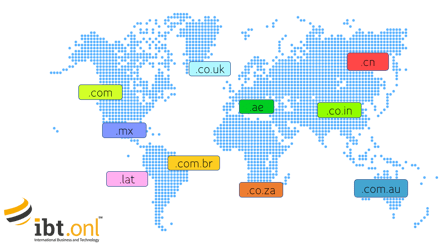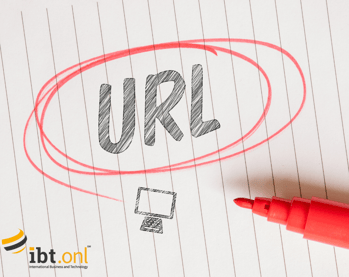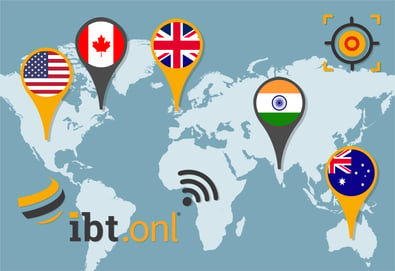 We can all agree that having a strong online presence is key if you wish to be successful in today’s competitive international marketplace. But what factors should you consider when deciding which URL structure to use, to facilitate a strong online presence for your business?
We can all agree that having a strong online presence is key if you wish to be successful in today’s competitive international marketplace. But what factors should you consider when deciding which URL structure to use, to facilitate a strong online presence for your business?
Multiple languages, multiple countries, and sometimes multiple languages within the same country can make international Search Engine Optimization (SEO) a daunting process. But don’t worry, in this blog we’ll review different options regarding URL structure, discuss their advantages (and disadvantages), and important considerations when taking your website internationally.
When thinking of International SEO, it’s important to keep in mind that you are not only trying to be found by search engines and their crawlers bots, but the URL structure you choose should take into count your local target market prospects – your local buyer persona – as well.
Having a localized website, both from a URL and content point of view, will play an important part in building trust with local users, allowing them to find you and interact easily with your brand.
URL Structures: ccTLDs vs. Subdomains vs. Subfolders vs. Parameters
So, what does a localized URL look like?
When considering the options to create international websites, there are three main choices regarding where to host your localized content:
- country code Top Level Domain (ccTLD) => yourbusiness.fr
- subdomain => fr. yourbusiness.com
- subdirectory => yourbusiness.com/fr
There really is no “one-size-fits-all” answer, but let’s shed some light on what these options are and their benefits and disadvantages.
ccTLD
ccTLD are country specific top-level domain which are automatically geo-targeted in Google Search Console.
If you want to focus your website on a specific country, this is the perfect option for you.
 Choosing to use a ccTLD will give a strong signal that you are focusing on the specific country, and will resonate well with their users, building trust from the get-go – especially important if you’re planning to build an international ecommerce site!
Choosing to use a ccTLD will give a strong signal that you are focusing on the specific country, and will resonate well with their users, building trust from the get-go – especially important if you’re planning to build an international ecommerce site!
The only downside to this is that once you have set up your website using a ccTLD, you will not be able to change the geo-targeting, and moving onto a different URL structure could cause losing momentum on organic traffic, so make sure you think about this carefully.
Subdomains & Subfolders
Subdomains define the root domain and are sometimes used to set up blog pages (blog. yourbusiness.com). These can also be used to geotarget your website towards a specific market => fr.yourbusiness.com.
As the name suggests, Subfolders define a sub-section of your domain => yourbusiness.com/fr
If you decide to follow this route, make sure you use Google Search Console to geo-target each subdomain or subfolder. This will ensure that the search engine recognizes which country or language your content should be displayed in and will ensure local users are shown the best option for them.
Parameters
Parameters allow you to target your content to speakers of a certain language – yourbusiness.com?lang=fr
Although this might seem the easiest option, at least when getting started with your international expansion, we would not recommend using parameters as Google itself discourages this option due to the difficulties in URL segmentation and the fact that parameters cannot be geotargeted.
Hybrids and combinations
So… which one should you use? The answer is…it depends on what you are trying to achieve.
If you are planning on expanding your exports, sales and brand in a specific country, ccTLD would be our recommendation as this would position your website in a good position in the eyes of your local users.
However, if the country you are targeting has more than one (official) language, you might end up with a combination of cTLD+subfolder structure that looks more like this: yourbusiness.ch/fr – clearly targeting French speaking users in Switzerland.
If, instead, you are not ready to commit to targeting one specific country, but would nevertheless like to expand your international efforts, you could choose a region specific gTLD (generic top-level domain) – yourbusiness.eu for the European Union or yourbusiness.lat for Latin America.
Despite common misconceptions, the gTLD – as per the denomination “generic” suggests – does not automatically geo-target your website to a whole region. To ensure users in specific countries will find the relevant content, you can use subdomains to specify location and/or language: yourbusiness.eu/fr could be used to reach users who are searching in French in France, Switzerland, Belgium and Luxembourg.
…and don’t forget Hreflang!
And who are they now and how do you pronounce that? Hreflang is a neat piece of coding that tells search engine in which language(s) your content is available.
Particularly when your website uses gTLD targeting a multilingual region – like Europe, for example – Hreflang will play an important role in making sure the local search engine knows which variation of the page is targeted to its users.
Hreflang tags allow you to specify not only the language, but also the specific dialect; if your website is primarily targeted at the US, you can use hreflang=”en-GB” to tell Google and other search engines that this specific page is targeting English speaking users, based in the UK.
These meta-tags are a very good way to ensure your users will be presented with the most relevant content for them, ensuring the best possible user experience and leading to a lower bounce rate.
Language Targeting vs. Country Targeting - The localization misconception

When defining who you are trying to reach with your international website, the natural choice is between targeting users by language or by their location.
By choosing to use your French website (yourbusiness.fr) to target all French speaking users across the Globe, you might think that your message will be understood globally by all French speakers – but unfortunately this is not the case.
As we dive into more details in one of our blogs, the way French is spoken in France can be very different from French spoken in Canada, or the Democratic Republic of the Congo.
By only translating your website into French, you are not guaranteed to be understood across all French-speaking markets. Localizing your content, imagery and, indeed, the language used, makes your website a much more powerful tool to support your international brand and sales growth – and your organic ranking!
Conclusion
Which URL structure you use when expanding internationally will depend on several factors – target markets, budgets, availability of the country domain even!
However, when weighing up all the options, there is one key element to keep in mind. The trick is full localization. Native users will trust and interact with websites that are familiar to them and will expect content that is relevant and speaks their language – localized.
If you want to know more about website localization and how this could turn your website into your most productive asset to get found, be understood and do business globally - just get in touch.
Sources:
https://yoast.com/domain-structures-for-international-and-multilingual-seo/
https://moz.com/blog/guide-to-international-seo
https://moz.com/learn/seo/hreflang-tag
https://www.semrush.com/blog/an-in-depth-look-at-international-seo/
https://webmasters.googleblog.com/2015/07/googles-handling-of-new-top-level.html
https://www.woorank.com/en/edu/seo-guides/international-seo-site-structure

